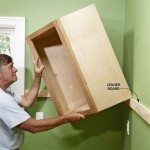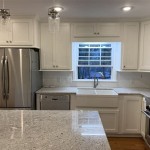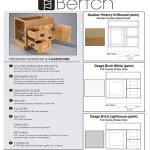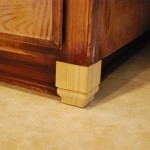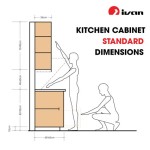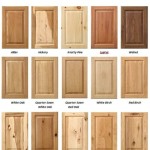Bar Kitchen Cupboard Handles: A Comprehensive Guide
Bar kitchen cupboard handles, characterized by their sleek, elongated design, have become a prevalent choice in modern kitchen aesthetics. These handles offer a distinct blend of functionality and visual appeal, contributing to the overall design language of the kitchen space. Their inherent versatility allows them to seamlessly integrate into various kitchen styles, ranging from minimalist contemporary to transitional designs. This article provides a comprehensive overview of bar kitchen cupboard handles, exploring their types, materials, installation considerations, and maintenance practices.
Types of Bar Kitchen Cupboard Handles
The category of bar kitchen cupboard handles encompasses a diverse range of designs, each offering slightly different aesthetic and ergonomic properties. Understanding these variations is crucial in selecting the appropriate handles that complement the specific design and functional requirements of the kitchen.
Solid Bar Handles: These handles are typically crafted from a single piece of material, usually metal, providing a robust and substantial feel. Solid bar handles are prized for their durability and clean lines, often favored in minimalist and contemporary kitchens. Their solid construction contributes to a feeling of quality and permanence.
Hollow Bar Handles: In contrast to solid bar handles, hollow bar handles feature a hollow core. This construction reduces the overall weight of the handle, making them a more cost-effective option, particularly for larger kitchens requiring a significant number of handles. While lighter than solid bar handles, they can still provide adequate strength and visual appeal when properly manufactured.
Square Bar Handles: These handles exhibit a square or rectangular cross-section, offering a more angular and geometric aesthetic. Square bar handles often appeal to those seeking a modern, industrial-chic look. Their sharp lines and defined edges contribute a sense of precision and order to the cabinetry.
Round Bar Handles: Round bar handles, as the name suggests, feature a circular cross-section. This design offers a softer, more ergonomic grip, making them a comfortable option for everyday use. Their rounded profile provides a gentle contrast to the angular lines often found in modern kitchens.
Arched Bar Handles: These handles incorporate a subtle arch or curve in their design. This arch can add a touch of elegance and sophistication to the cabinetry, providing a visual interest that is both subtle and impactful. Arched bar handles can be particularly effective in transitional kitchen styles.
T-Bar Handles: T-bar handles deviate slightly from the traditional bar shape. They consist of a vertical post or bar attached to the cabinet door or drawer with a single fixing point. This minimalist design emphasizes simplicity and functionality. T-bar handles are often favored in ultra-modern kitchens with clean, uncluttered lines.
The choice between these different types of bar handles depends on the desired aesthetic, the budget constraints, and the functional preferences of the end-user. Careful consideration of these factors will ensure that the selected handles perfectly complement the overall design of the kitchen.
Materials Commonly Used in Bar Kitchen Cupboard Handles
The material composition of bar kitchen cupboard handles significantly influences their durability, appearance, and overall cost. Various materials are employed in their manufacture, each possessing distinct characteristics that cater to different aesthetic and budgetary requirements.
Stainless Steel: Stainless steel is a popular choice due to its inherent durability, corrosion resistance, and clean, modern aesthetic. Stainless steel handles are readily available in various finishes, including brushed, polished, and matte, allowing for customization to match existing kitchen fixtures. They are also relatively easy to clean and maintain, making them a practical choice for high-traffic kitchens.
Brass: Brass handles offer a touch of warmth and elegance to the kitchen space. Brass can be polished to a high shine or left with a natural patina for a more vintage look. Its inherent antimicrobial properties are an added benefit. However, brass can be more susceptible to tarnishing than stainless steel, requiring periodic polishing to maintain its luster.
Zinc Alloy: Zinc alloy handles provide a cost-effective alternative to stainless steel and brass. Zinc alloy is a durable and versatile material that can be easily molded into various shapes and sizes. It is often finished with plating to mimic the appearance of more expensive materials like stainless steel or brushed nickel.
Aluminum: Aluminum handles are lightweight, durable, and corrosion-resistant. Aluminum is often anodized to provide a protective layer and a range of color options. Its lightweight properties make it a suitable choice for larger cabinets and drawers, reducing strain on the hardware.
Wood: While less common than metal options, wood bar handles offer a unique and natural aesthetic. Wood handles can be crafted from a variety of hardwoods, such as oak, maple, or walnut, and can be stained or painted to match the cabinetry. They provide a warm and tactile feel, adding a touch of rustic charm to the kitchen.
Acrylic: Acrylic handles offer a modern and translucent look. Acrylic can be colored or clear and can be combined with metal accents for a more sophisticated design. Acrylic handles are often used in contemporary kitchens seeking a minimalist and understated aesthetic.
The selection of the appropriate material hinges on several factors, including the desired aesthetic, the budget, and the anticipated level of wear and tear. Stainless steel and brass offer superior durability, while zinc alloy and aluminum provide more cost-effective options. Wood and acrylic handles offer unique aesthetic possibilities for specific design styles.
Installation Considerations for Bar Kitchen Cupboard Handles
Proper installation of bar kitchen cupboard handles is crucial for ensuring their functionality and longevity. Incorrect installation can lead to loose handles, stripped screws, and damage to the cabinetry. Careful planning and execution are essential for achieving a professional and lasting result.
Determining Hole Spacing: Bar handles typically require two mounting points. The distance between these mounting points, known as the "hole spacing" or "center-to-center" measurement, is a critical factor in selecting and installing the handles. Prior to purchasing handles, it is essential to accurately measure the existing hole spacing on the cabinets and drawers. If installing new handles, careful consideration should be given to the placement of the holes and the desired style of handle.
Using a Template: To ensure accurate and consistent hole placement, it is highly recommended to use a template. A template can be purchased or created from cardboard or thin wood. The template should be accurately marked with the correct hole spacing. Using a template minimizes the risk of errors and ensures that all handles are installed in the same position.
Drilling Pilot Holes: Before installing the screws, it is crucial to drill pilot holes. Pilot holes prevent the wood from splitting and make it easier to drive the screws in straight. The diameter of the pilot hole should be slightly smaller than the diameter of the screw. Using a drill bit that is too large can result in stripped screws and loose handles.
Selecting the Correct Screw Length: The length of the screws is another important consideration. The screws should be long enough to securely fasten the handle to the cabinet door or drawer but not so long that they protrude through the back. The thickness of the cabinet door or drawer should be measured to determine the appropriate screw length. Washers can be used to help ensure a secure fit and prevent the screw head from damaging the cabinet surface.
Tightening the Screws: When tightening the screws, it is important to avoid over-tightening. Over-tightening can strip the screws or damage the cabinet door or drawer. The screws should be tightened until the handle is securely fastened but not to the point where the wood begins to compress. A screwdriver with adjustable torque settings can help prevent over-tightening.
Checking Alignment: After installing the handles, it is important to check their alignment. The handles should be level and evenly spaced. If the handles are not aligned properly, they can be adjusted by loosening the screws and repositioning them. In some cases, it may be necessary to enlarge the pilot holes slightly to allow for more adjustment.
Using Shims: If the cabinet doors or drawers are not perfectly flush, shims can be used to ensure that the handles are properly aligned. Shims are thin pieces of material, such as wood or plastic, that can be placed behind the handles to compensate for uneven surfaces.
By carefully following these installation guidelines, it is possible to achieve a professional and lasting result. Proper installation ensures that the bar kitchen cupboard handles function properly and enhance the overall aesthetic of the kitchen.

Kitchen Cupboard Handles

T Bar Kitchen Cupboard Handles In Polished Chrome 256mm Centres Handle King

Boss Bar Kitchen Handles

Square Bar Cabinet Pull Drawer Handle Stainless Steel Modern Hardware For Kitchen And Bathroom Cabinets Cupboard Center To Handles Temu

Kitchen Cabinet Handle Satin Nickel Stainless Steel 448mm C Silver Cupboard D Bar Pulls

128mm Brushed Brass Kensington Knurled T Bar Kitchen Cabinet Drawer Handle

Handle Furniture Cabinet Pull Handles Drawer Pulls Square T Bar Gold Brushed Nickel Kitchen Cupboard China Black Brass Made In Com

T Bar Kitchen Cabinet Door Handles Brushed Chrome 160mm Centres Handle King

Homdiy Cabinet Pulls Brushed Nickel Handles Modern Stainless Steel T Bar Drawer

Kitchen Cabinet Handle Cupboard Bar Door Brushed Stainless Steel Handles Modern
Related Posts

